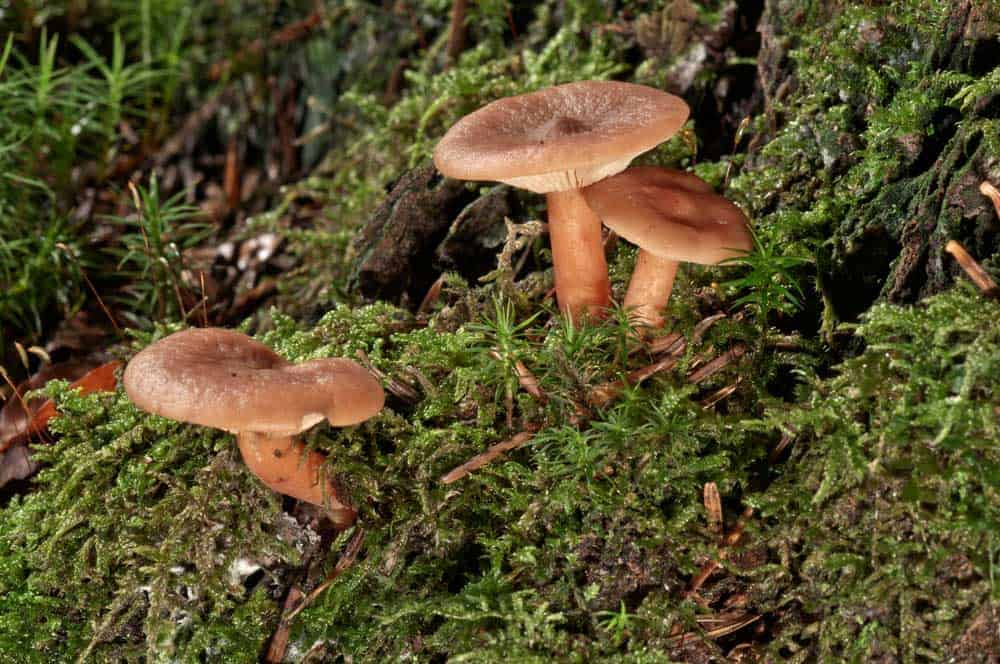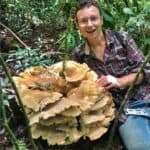Table of Contents
Mushrooms are the reproductive structures produced by filamentous fungi. They reproduce via spores produced on the mushroom fruiting body. After germinating, these spores grow into infertile mycelium. This mycelium will grow in search of a compatible mate to which it can fuse and share its DNA. Only after this will the mycelium be fertile and be able to produce mushrooms.
The Mushroom Life-Cycle
- Spores germinate and form infertile mycelium
- Two infertile (haploid) mycelia fuse to form fertile (diploid) mycelium.
- Mycelium grows on its substrate, assimilating nutrients.
- Environmental triggers stimulate the production of mushrooms.
- Mushrooms grow and produce spores.
Mushrooms are reproductive Structures
For most people, mushrooms are the most familiar part of the fungal kingdom. Yet they are only the reproductive structures of a larger organism. Most of the fungi actually exist as white web-like mycelium. This mycelium grows within a variety of substrates like soil or dead wood.
Only once a fertile mycelium has assimilated enough nutrients will it produce mushrooms. Environmental triggers like rain and temperature can also induce the production of mushrooms. Mushroom forming fungi fall within the classifications known as Basidiomycota and Ascomycota.
Mushrooms reproduce with Spores
A single mushroom can produce billions or even trillions of spores. They are usually produced in the gills, pores, or other special reproductive tissues. They are microscopic and dust-like, with the ability to travel vast distances in the wind. Certain types of mushroom spores disperse in the rain, running water, or even with animals.
Individual spores are invisible to the naked eye. Yet you can see large quantities of spores amassed together. This usually occurs below a mature mushroom or on a spore print. They can be a variety of colors including black, ocher, white, and pink. You can make spore prints by placing the mature cap of a mushroom on a piece of paper for 6-12hrs.
Are Spores the Seeds of a Mushroom?
Spores are actually much different from seeds produced by plants. Unlike seeds, spores only contain half the genetic information of a fertile individual. This makes spores more like the pollen and ovules of plants. Compared to animals, they are like sperm and unfertilized eggs. In other terms, spores are the gametes of a mushroom.
This means it takes two spores to make a mushroom!
Once germinated, spores grow as infertile mycelium in search of a suitable mate. Once two compatible mycelia meet, they will fuse and merge their DNA. Only after this fusion will they produce the fruiting bodies we know as mushrooms.
Asexual Reproduction by Mushrooms
While it’s uncertain how often this happens in nature, mushroom-forming fungi can reproduce asexually. A single cell or strand of mycelium can grow independently of its larger self. In fact, it’s this ability that mushroom growers use to reproduce mushrooms on large scales. Mushroom growers grow the mycelium and “clone” it into new substrates.

